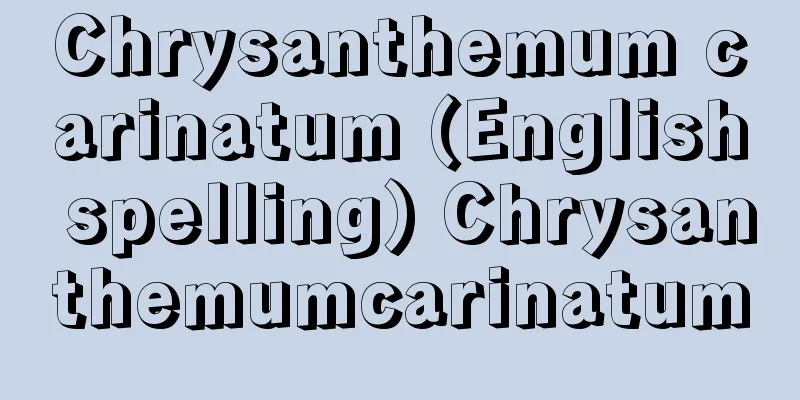Passenger ship - passenger

|
A merchant ship that mainly carries passengers. A ship that only carries passengers is called a pure passenger ship, and a ship that carries both passengers and cargo is called a cargo-passenger ship, but if the ship is similar in both content and appearance to a pure passenger ship, it is generally called a passenger ship. However, legally, a ship with passenger facilities for 13 or more people is treated as a passenger ship, regardless of the amount of cargo facilities, and the strictest safety standards are imposed for the safety of human life. Passenger ships boast luxurious facilities and design, speed, comfort, safety, etc., and were once considered to represent the industrial level of a country. Luxury passenger ships such as the Queen Mary (built in 1936, 80,774 gross tons, UK) and the Queen Elizabeth (built in 1940, 83,673 gross tons, UK) appeared, and Japan also operated ships such as the Chichibu Maru (built in 1930, 17,498 gross tons) and the Asama Maru (built in 1929, 16,947 gross tons) on international routes. However, passenger ship profitability gradually declined, and the development of airplanes took away passengers, so famous passenger ships disappeared one after another. Japan only had two pure ocean-going passenger ships: Nippon Maru (the old second-generation Argentina Maru was refurbished in 1972 and operated as the first Nippon Maru, retiring in 1976; in 1977 the old Seven Seas was refurbished and operated as the second Nippon Maru, 9,745 gross tons, retired when the new third-generation Nippon Maru was completed in 1990) and Shin Sakura Maru (a trade fair ship refurbished in 1981 into a pure passenger ship, 16,431 gross tons). These two ships were then replaced in 1989 (Heisei 1) by Japan's first fully-fledged newly built passenger ships, Fuji Maru (23,340 gross tons) and Oceanic Grace (5,218 gross tons), which became known as the "first year of cruises." Subsequently, large luxury passenger ships such as the third generation Nippon Maru (launched in 1990, 21,903 gross tons), Asuka (launched in 1991, 28,856 gross tons), and Pacific Venus (launched in 1998, 26,518 gross tons) were launched, and as of 2000 there were seven major ships (two of which were foreign-flagged and Japanese-owned). With the worldwide trend towards higher speed and greater efficiency, the field of activity for passenger ships continued to narrow, but from the 1980s in Europe and the United States, and from the 1990s in Japan, cruise ships began to become popular, replacing regular crossing liners. In Japan, ships such as Asuka operate round-the-world cruises. [Morita Tomoharu] [Reference] | |A cruise ship operated by NYK Cruises. Its former name was Crystal Harmony (launched in 1990), and it was refurbished in 2006 to its current name. Overall length 241m, gross tonnage 50,142t, maximum sailing speed 21 knots, crew of approximately 470, passengers 872 ©Shogakukan "> Asuka II Source: Shogakukan Encyclopedia Nipponica About Encyclopedia Nipponica Information | Legend |
|
おもに旅客を運ぶ商船。旅客だけを運ぶ船を純客船、旅客と貨物の両方を運ぶ船を貨客船というが、内容、外観ともに純客船に近ければ一般には客船とよばれる。ただし法規上は、貨物設備の多少にかかわらず、13名以上の旅客設備をもった船は客船として扱われ、人命の安全のためにもっとも厳しい安全基準が課される。客船は、豪華な設備やデザイン、快速性、乗り心地のよさ、安全性などを誇り、かつてはその国の工業水準を代表するものとされた。クイーン・メリー号(1936年建造、8万0774総トン、イギリス)、クイーン・エリザベス号(1940年建造、8万3673総トン、イギリス)などの豪華客船が現れ、日本でも秩父(ちちぶ)丸(1930年建造、1万7498総トン)、浅間丸(1929年建造、1万6947総トン)などを外航航路に就航させていた。しかし客船の収益性はしだいに悪化し、また航空機の発達により旅客を奪われ、有名な客船は次々と姿を消していった。 日本の外航純客船は、にっぽん丸(1972年に旧2代目あるぜんちな丸が改装され初代にっぽん丸として運航し76年に引退。1977年旧セブンシーズ号が改装され2代目にっぽん丸として運航、9745総トン、1990年竣工の新造船3代目にっぽん丸の就航とともに引退)と新さくら丸(1981年見本市船から純客船に改装、1万6431総トン)の2隻のみであった。その後、この2隻にかわって、1989年(平成1)日本初の本格的新造客船ふじ丸(2万3340総トン)、おせあにっくぐれいす(5218総トン)の2隻が就航を開始し、この年は「クルーズ元年」といわれた。その後も3代目にっぽん丸(1990年就航、2万1903総トン)、飛鳥(あすか)(1991年就航、2万8856総トン)、ぱしふぃっくびいなす(1998年就航、2万6518総トン)など大型豪華客船が就航、2000年現在おもなものは7隻(うち2隻は日本資本の外国籍船)となった。世界的な高速化、効率化の下で客船の活動分野は狭まる一方であったが、欧米においては1980年代から、日本でも1990年代から、定期横断客船にかわって巡航客船(クルーザー)の旅が普及し始めた。日本では飛鳥などが世界一周クルーズを運行している。 [森田知治] [参照項目] | |郵船クルーズ社のクルーズ船。旧名はクリスタルハーモニー(1990年就航)で、2006年に改装されて現船名となった。全長241m、総トン数5万0142t、航海速力最高21ノット、乗組員約470名、乗客数872名©Shogakukan"> 飛鳥Ⅱ 出典 小学館 日本大百科全書(ニッポニカ)日本大百科全書(ニッポニカ)について 情報 | 凡例 |
Recommend
Presbyterianism - Chorosei
Rule by the Elders. In most societies, growing ol...
Cameron, GG - Cameron
...The investigation of the inaccessible inscript...
Studs Lonigan (English)
…He was born and raised in Chicago's South Si...
diarrhea
Concept Diarrhea was the most important symptom al...
Arari
...The northern part of the prefecture is home to...
Gaslight paper
... The emulsion used is a silver halide gelatin ...
Ainae - Ainae
A delicate annual weed of the Logaceae family (ill...
music festival
...A general term for an event in which concerts ...
Henriot, J.
...One of the important factors in this is the wi...
Urban Designer
Please see the "Urban Planner" page. So...
Onoe Shouroku (first generation)
...Kabuki actor. Up to two generations. (1) First...
Onitobi - Onitobi
...〈Kneeling〉 = The first and second players clas...
African marigold (English spelling)
...It is an annual or perennial plant of the Tage...
Old middle class - Middle class
The new middle class is a social class that exists...
Alkali pyroxene - Alkali pyroxene
…In addition, pyroxenes in the augite-ferrosilite...

![Owase [city] - Owase](/upload/images/67cb24f25a352.webp)







